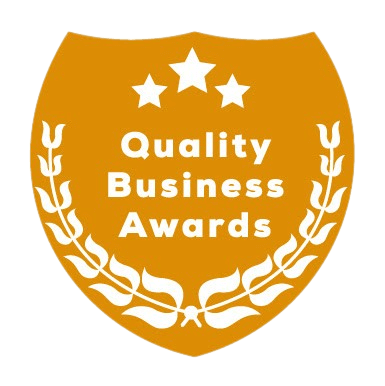We Are a Leading Security Protective Services Company
International Protective Services for Executives and Businesses
We are a strategic level security management group comprised of highly experienced professionals that come from diverse backgrounds, ranging from industrial security, to financial services, law enforcement, military special operations, and intelligence arenas. Our executive and business security services team was formed to meet the demand for protective services in Mexico and Latin America in the 2000’s. Since then, the company has gradually moved beyond our initial niche, now secure our clients’ assets, infrastructure, and personnel throughout the United States and around the world.
Who We Are:
We provide high level strategic solutions to complex security issues. We provide highly skilled and thoroughly trained security personnel to solve nearly any security problem. From executive protection during travel to foreign countries, to manning security patrols for industrial campuses and facilities. We are built to provide you with quality bodyguards, guard forces, and static security solutions.
Built on Core Values:
With Eagle Eye, every person on our security team, every security service we provide, every deliverable we commit to, will demonstrate a genuine level of care and commitment. We’re not interested in the lowest common denominator for the highest profit margin. Instead, we focus on meticulous screening and systematic training of qualified security personnel who are extremely motivated and committed to do their very best to protect you and your assets.
Headquartered in San Diego, we serve the following areas:
- San Francisco
- Palo Alto
- Southern California
- New York
- Latin America
- Europe
- Africa
- Middle East
Licenses and Registrations
SAM REGISTERED
DUNS: 024471092
CAGE: 5DNM3
CA PRIVATE PATROL LICENSE: 119901
PRIVATE INVESTIGATIONS LICENSE: PI 188046
Credentials and Qualifications
-
Led by former Army and Navy Special Forces
-
Highly vetted, highly trained, and certified team
-
Team of agents with highly specialized and diverse backgrounds
-
Providing service across the globe since 2008
-
Timely responses and quick turnarounds
-
Well-traveled agents with local area knowledge
Our Team Undergoes A Thorough Vetting Process
Vetting new employees is a crucial step in building a trustworthy and competent workforce. A comprehensive vetting process involves evaluating candidates on multiple levels, including physical, mental, and background checks. Here’s a detailed guide on how to effectively vet new employees using these criteria:
1. Background Checks
- Criminal History: Conduct criminal background checks to ensure the candidate does not have a history that could pose a risk to your business or other employees. This includes checking for any convictions, arrests, and warrants.
- Employment History Verification: Verify the candidate’s employment history to confirm the accuracy of their resume. Contact previous employers to discuss the candidate’s role, performance, and reasons for leaving.
- Educational Verification: Confirm the candidate’s educational qualifications by contacting the institutions listed on their resume. This helps to ensure they possess the necessary credentials and knowledge for the position. This also includes all certifications and licenses related to security.
- Credit History: Check the credit history for positions that involve financial responsibilities. A credit check can provide insights into a candidate’s financial stability and integrity. When applicable.
- Reference Checks: Contact personal and professional references to gather insights about the candidate’s character, work ethic, and abilities.
2. Physical Checks
- Health Screening: Depending on the job requirements, health screenings can be essential to ensure that the candidate is physically capable of performing their duties, especially for physically demanding roles.
- Drug Testing: Implement drug testing to ensure that candidates are not using illegal substances. This is particularly important in industries where safety is a priority, such as transportation or construction.
- Functional Capacity Evaluation (FCE): For roles that require specific physical abilities, an FCE can be conducted to assess the physical capabilities of a candidate relative to the job demands.
3. Mental and Psychological Evaluation
- Harrison Evaluation and Testing: The Harrison test, more formally known as the Harrison Assessments, is a comprehensive assessment tool used in the recruitment and development of personnel. It is designed to help employers make better hiring decisions, develop talent, and enhance team performance by providing deep insights into candidates’ and employees’ suitability for specific roles based on their behavioral tendencies, preferences, and work-related attitudes.
- Behavioral Interviews: Conduct interviews that explore how a candidate has handled situations in the past. This method can provide valuable insights into their problem-solving skills, adaptability, and decision-making process.
- Stress Management Evaluation: Certain roles may require the ability to manage stress effectively. Assessments can be designed to understand how a candidate handles pressure, which is crucial for high-stakes or emergency response roles.
4. Integrating the Vetting Process
- Consistency: Apply the same vetting standards to all candidates to ensure fairness and compliance with employment laws.
- Transparency: Clearly communicate the vetting process to candidates. Transparency helps in building trust and sets clear expectations from the start.
- Privacy: Handle all personal information with the utmost respect for privacy. Ensure compliance with data protection regulations, such as GDPR or HIPAA, depending on the location and industry.
5. Post-Hire Monitoring
- Probationary Periods: Use probationary periods to continuously evaluate the employee’s performance and fit within the company culture.
- Ongoing Development and Evaluation: Implement regular performance evaluations and provide opportunities for professional development to help employees grow and succeed in their roles.
Implementing a thorough vetting process not only minimizes potential risks but also contributes to creating a productive, harmonious, and professional workplace environment. Each step should be tailored to the specific needs and risks associated with the job to ensure that all new hires are well-suited to their roles both professionally and personally.

